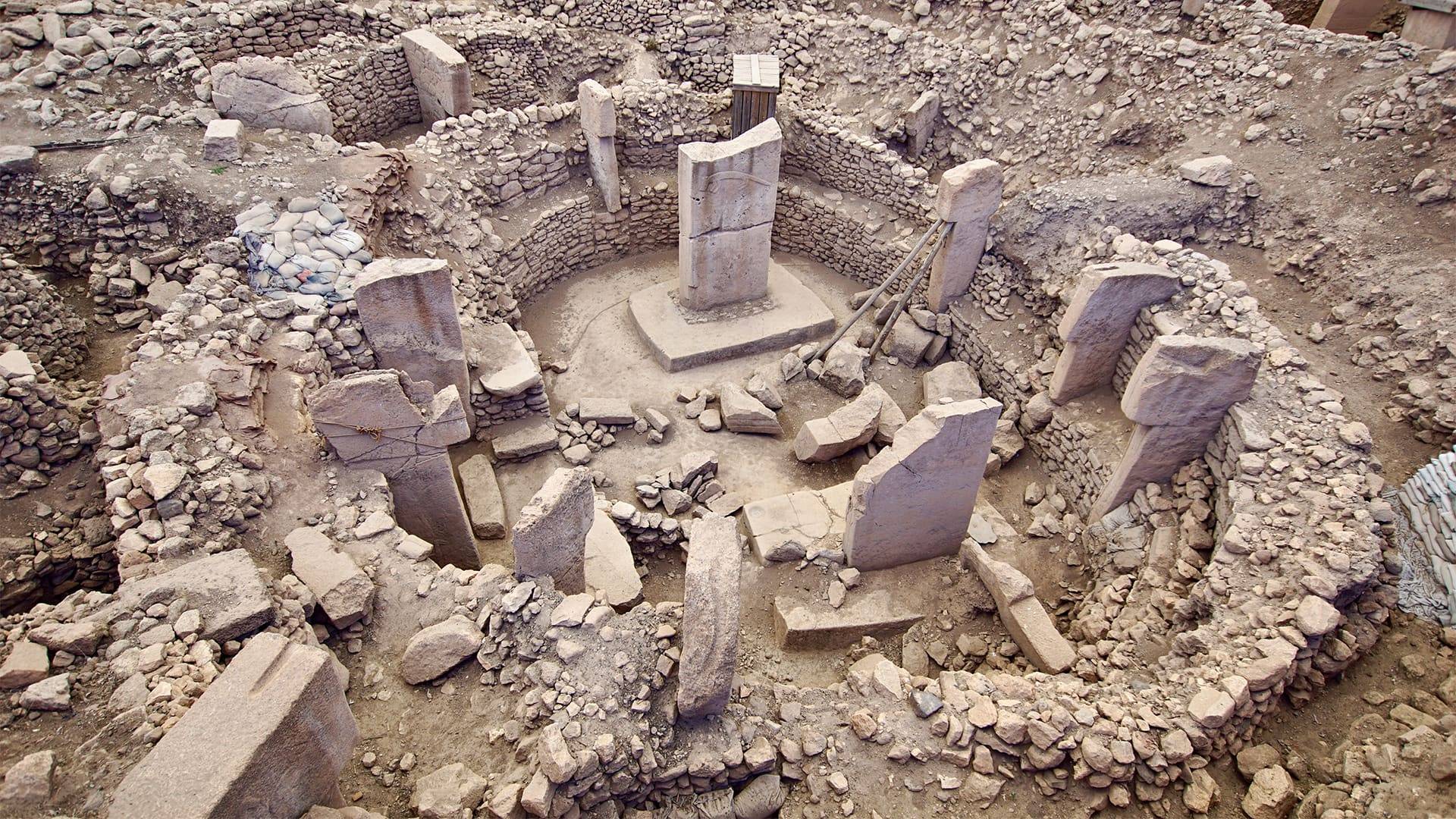Internationally known archaeologist, UHCL profs to give lecture on stunning Turkish
discovery
March 3, 2020 | UHCL Staff
A stunning archaeological discovery in southeastern Turkey has shaken the conventional
view of the rise of civilization. Coordinator of Research and Fieldwork at Göbleki Tepe Lee Clare will travel from Germany, where he teaches in the Istanbul Department of the German Archaeological Institute, to University of Houston-Clear Lake to discuss the findings in a mini-conference
and reception on March 11 at 5 p.m. in the Forest Room of the Bayou Building. UH-Clear
Lake's Associate Professor of History Cengiz Sisman, who organized the event, will be presenting with Associate Professor of Art History Sarah Costello. UHCL President Ira K. Blake will be making opening remarks.
Turkish Consul General Akil Öktem and Halid Bulut, executive director of Yunus Emre Cultural Institute in Washington, D.C. will also be present for the event.
Göbekli Tepe, seen as early evidence of prehistoric worship, predates Stonehenge by over 6,000
years. Noted German archaeologist Klaus Schmidt of the German Archaeological Institute
began work at the site in 1994. He discovered that stone pillars that had been initially
excavated in 1963 had been mistakenly identified as grave markers. Upon re-examining
the site, he recognized the rocks and slabs were probably prehistoric. Further excavation
revealed the megalithic structures beneath, and radiocarbon dating indicate that it
is most likely the oldest known temple discovered anywhere.
Schmidt died in 2014, but Sisman said that the discovery of the site is one of the
greatest moments in the history of homo sapiens.
“Stonehenge is between 6000-7000 years old, and the pyramids in Egypt are 4000-5000
years old,” he said. “There are three layers to this structure, and the lowest layer
goes back 11,000 years, if not more. The common assumption is that it’s a temple,
but it could also have been a communal gathering place for social events. There are
still so many questions we don’t know the answers to about this mysterious set of
buildings.”
Sisman said that since it predates all the megastructures that we know of, Göbekli
Tepe has changed many of our historical, anthropological and archaeological assumptions
about the birth of civilizations, culture, religions and material culture.
“The common narrative about human history is that everything started simply and evolved,
and then, during the Neolithic revolution, complex societies were formed with their
political, religious, and cultural structures by the river basins on different parts
of the earth about 10,000 years ago,” he said. “But this structure has now forced
us to think that perhaps complex societies and culture predates this so-called Neolithic
revolution. In order to build such a megalith, they needed to have vision, architectural
knowledge, time, energy and resources including food to feed the workers. All of these
requires to have a much more advanced and complex society than we originally assumed.”
That means, he continued, that it would be modern men’s arrogance to think that our
ancestors were simple-minded primitives. “Albeit technologically not much advanced,
they had been dealing with the similar emotional, philosophical, ethical and other
material questions for thousands of years before us,” Sisman said. “That’s why understanding
this site would give us very important clues about the way our proverbial common ancestors
envisioned themselves and the world around them. This is a marvelous thing to contemplate.”
Costello has been researching the symbolism and visual culture of Göbekli Tepe for
10 years and has visited the site. She said that one of the most interesting aspects
of the site is that the megalithic structures have been intentionally destroyed and
filled in.
“It’s almost as if they considered these buildings to have a life, and the life of
that building came to an end and so it was buried,” she said. “Arguably the biggest
changes in the history of our species were beginning to occur at that time. People
went from being hunter-gatherers to settling down and producing their own food by
farming and domesticating animals. That changed everything that affects the way we
live on the planet today, and the way they handled those changes intellectually and
psychologically is reflected in their visual culture, which is evidenced in this site.”
Costello described five-meter high pillars with ferocious animal carvings at the site.
“These structures were a focal point of this gathering place. There were no villages
or places to live around, but for some reason, carving these images into the pillars
was important,” she said. “We’ve never seen anything this monumental this early. It
really changes our conception that humans this far back in time were consumed with
the problems of staying alive, not creating art or megaliths.
“They took the time to carve those pillars not because it helped them get food, but
because it had some importance to them,” she said. “It also proves that they could
work together and create structured spaces to effectuate a structured society. In
a sense, they were creating social structures as they were building physical structures.”
“Archaeologists are mining the site for us, but when it comes to interpreting the
meaning of what is found, we need scholars from across all disciplines,” Sisman said.
“We need historians, artists, anthropologists, sociologists, engineers, evolutionary
biologists and psychologists together to interpret this critical episode in the history
of homo sapiens.”
The event is free and open to the public and is made possible through the support
of the Turkish Consul General and Yunus Emre Turkish Cultural Institute.
Learn more about UHCL's History program and the Minor in Art History online.
About the Author:
Recent entries by
October 18 2022
Better technology transforms campus safety: Police Chief demonstrates SafeZone to students
October 14 2022
Student's skill with drones takes chicken turtle research to new heights
October 11 2022
Planting event to help UHCL restore native plants to campus, support environmental sustainability







